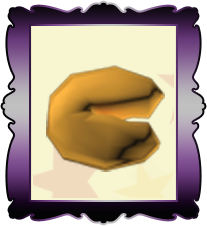 |
During the 19th Century, a very similar cookie known as tsujiura senbei (čľ»ĺŤ ç…Žé¤…) was made in Kyoto, Japan. These Japanese versions also contained random fortunes known as o-mikuji, which was part of a Japanese temple tradition. These cookies were of a similar shape to the modern day cookie but were larger, a darker color, and were made with sesame and miso versus the modern vanilla and butter. The fortune itself was wedged into the cookie’s fold rather than inside of the cookie. These cookies can still be found in various regions of Japan. Many Japanese would migrate to the United States and various Japanese bakers would begin modifying the tsujiura senbei.

Makoto Hagiwara was a Japanese immigrant who founded the Japanese Tea Garden at the Golden Gate Park in San Francisco, California. Hagiwara is often credited with being the inventor of the modern day fortune cookie. He had the fortune cookies made by Benkyodo, a traditional Japanese bakery. The cookies were served at the Japanese Tea Garden in the 1890’s to the early 1900’s.

There are also various other reports of people who believe they were the first to create the modern day fortune cookie. Regardless of who made the first modern fortune cookie, one thing we know for sure: it’s an American invention and it has been ingrained into American culture for decades.
|





